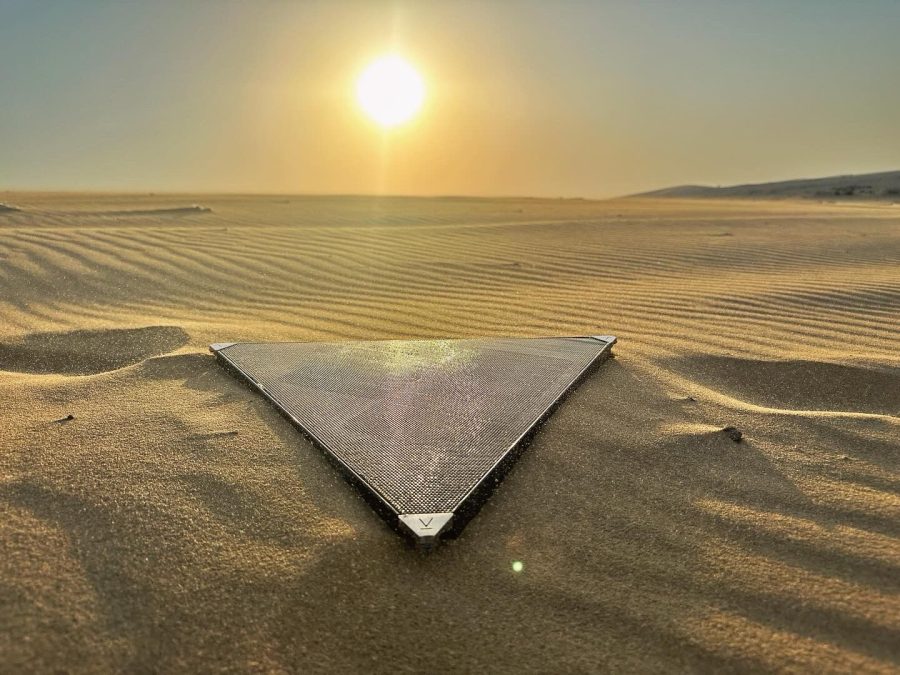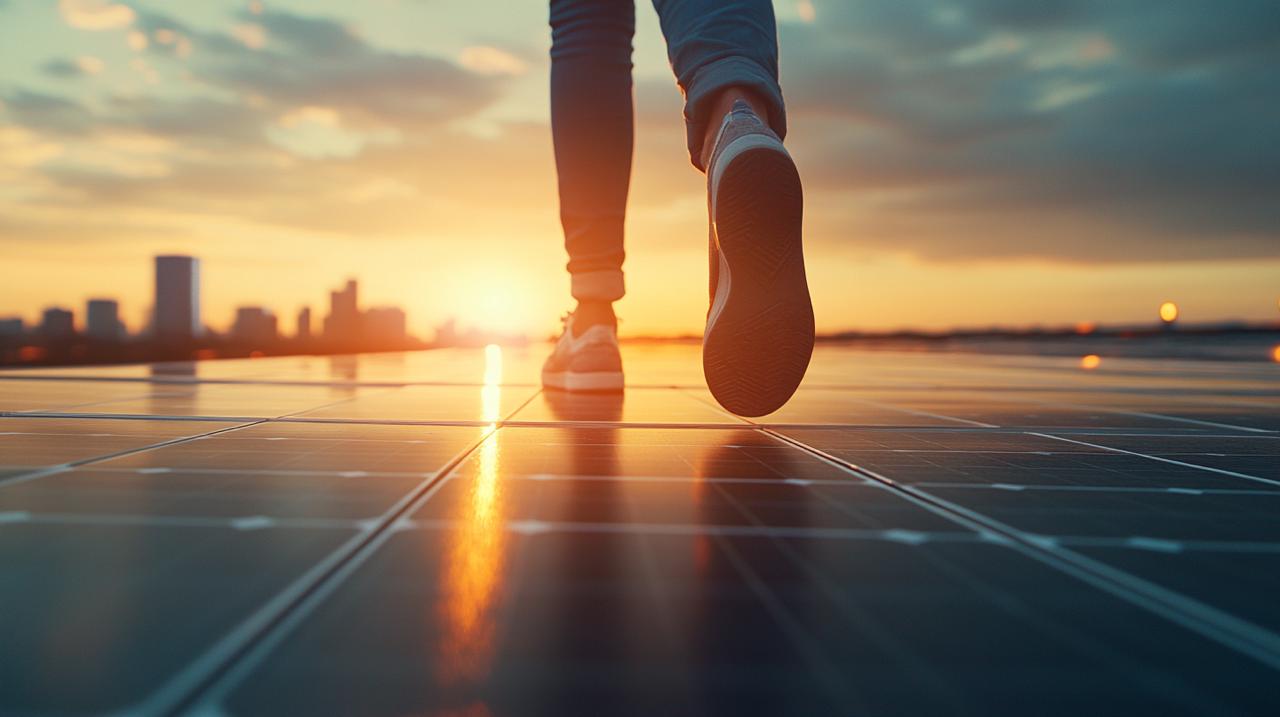Istanbul, Turkey- Never has footfall been so commercially ‘power-full’. Pavegen, a global kinetic energy company, unveiled its innovative “Solar+” tile in Dubai. This tile harnesses the power of movement, be it through walking, running, biking, or a wheelchair, to generate energy and deliver up to 30 times more power than its predecessor. That translates into commercial success in more ways than one.
The story of how this came to be is equally powerful. It shows the resilience and courage any entrepreneur needs to get his/her idea off the ground, literally as it turns out for Laurence Kemball-Cook, Pavegen founder and CEO.
“My journey started working my first ever job in one of the largest energy companies in Europe. I was tasked with finding new ways to generate energy in an urban environment. I looked at solar and wind but you don’t get great sun and wind in a city, so I got fired,” Laurence shared during an interview with TRENDS.
He spent a year thinking about other solutions such as generating energy from trees and trying to capture the chemical reaction in the soil which led to the power of footsteps on the ground. Amped up, he spent five more years developing it before producing his prototype. “People loved it. But it was still a struggle because no one cared to invest in an idea lacking a track record.”
Next came an extreme measure that could have landed Laurence into legal hot water. Instead, it landed him a huge contract.
“I essentially drove at 2:am to South Bank in London, a popular tourist area near the River Thames, and used a pickax to remove existing street tiles to install my solar panels. By 6:00 am, I was done. The next day, I got a phone call. It wasn’t the police. It was from Westfield Mall, a global giant, asking about my installation and later signed a half-a-million dollar deal using just a prototype, no team, and no idea how I’d possibly actually do it,” Laurence recounted with a smirk.

How does Solar+ work?
Energy is just one aspect of this multifaceted product, the brainchild of Laurence, who ingeniously used the kinetic energy from footsteps to offer continuous power generation from active solar cells that feed off-grid energy storage systems or power new forms of e-transport within cities.
Tiles feed into a battery-powered management system allowing an interface to happen with an e-bike charging station, for example.
“The dream in the future is to move into larger, more grid-focused array sizes. But at the moment, our focus is on using the energy in localized scenarios. We see PaveGen as a core component of and part of that energy mix for smart cities of the future,” Laurence said.
To date, Pavegen tiles have harnessed the power of over 1 billion footsteps in smart cities, from public spaces in London to sports stadiums in the US and transport hubs in Australia and Hong Kong, all in immersive, experiential installations designed to engage pedestrians, commuters, shoppers and communities.
“We’re on a mission to unlock the value of human footsteps and generate positive outcomes for the planet,” Laurence said.
Smart city developments in the region where this optimally applies to
For Pavegen, Dubai and the UAE have some of the busiest metropolises in the region with soccer fields, malls, subway systems, expo centers, and more. “We’re really intrigued by the new DEWA headquarters, slated to be the greenest building in the world. We hope to cover that with our technology as well,” Laurence revealed.
“We have also just closed our first giga project contract in Saudi near Riyadh.”

Commercially harnessing data generated from footsteps
Laurence said footstep data needs to be generated in a way that creates trust when recording footfall and dwell time. “That’s the simple layer. But as you walk on the tile, we can ask you questions via an app such as ‘Do you like living in Dubai? Or ‘What do you think the next 10 years are going to look like?’ And we can start to understand and generate insights from a general population, like a focus group.”
He said sporting activities like walking or exercising are also encouraged with rewards. The company, for example, built a running track in Hong Kong that powers the lights in a building as people run around it. “We make it fun and interactive. We can say: ‘Hey, if you walk over this tile on the app, you can get a discount on a purchase, or a certain mall will donate 100 dirhams to a local charity every time you walk on a certain array of tiles. It’s anonymized, so there’s no trust or privacy issues on that basis.”
Yet from a business standpoint, Pavegen basically uses a SaaS model that when clients subscribe opens a dashboard that gives them that data on footsteps. “We’re not sending that information to third parties. It’s owned by the client only,” Laurence assured.
Pavegen is designed as a bespoke solution for clients, costing a similar price as a high-end floor one would see in a hotel. “Our aim is to bring the price down to sub US$1,000 a square meter in the future and commoditize it,” Laurence indicated.
ROI for smart city developers or community centers
According to Laurence, depending on the project, there are currently a few ways clients can make returns on their investment. “They might need remote power in a specific area and using solar tiles gives you power without needing to run kilometers of underground cabling.”
More importantly, Pavegen taps into a sustainability trend that nearly 75 percent of young people are more likely to buy a product that’s sustainable and green, Laurence revealed. “People care about sustainability. We know we can influence buying decisions. We know that there’s a marketing ROI based on people using the panels and encouraging them to come to the mall to make a difference in the environment,” Laurence said.
How much investment went into this?
Pavegen has raised around US$12 million since start. “We’re also backed by Wadi Makka Venture a Saudi VC fund. Our objective is to do one more fundraising allowing us to exit within the next 2-3 years. We’re a team of about 38 engineers, designers, and electrical engineers, all based in London,” Laurence disclosed.
Laurence said that Pavegen aims to reach a point where the product is installed free of charge in every mall, every housing development, and every subway system. “We would ideally just monetize the data and energy coming off of there. But we need a much larger rollout for this to happen,” Laurence indicated. “Until we have scale, we are inviting more people to join the solar revolution with every installation. We’ve created a way where we all can walk on top of the sun, literally through our steps.”
For sustainability enthusiasts, they are already over the moon about this.








